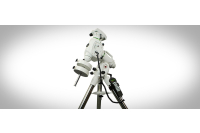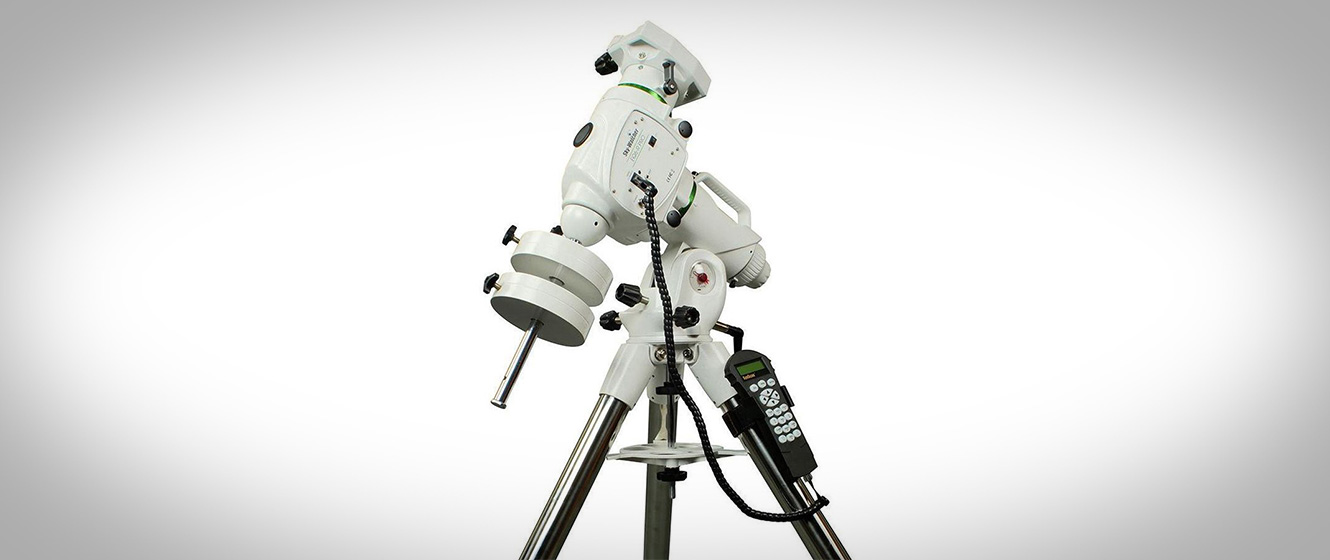
A German Equatorial Mount (GEM) can be an absolute game-changer for your astrophotography. This ingenious mount will enable you to take long exposures of the nighttime sky without trailing. With the right preparation, it is guaranteed to help you take photos of the nighttime sky that will blow you away.
Okay, but what does an Equatorial Mount Do?
First, it’s important to understand exactly what an equatorial mount does. You might already be familiar with an alt-azimuth mount, which works by rotating on two perpendicular axes (left-right, up-down). An equatorial mount works in a very similar way; however, one axis is parallel to the Earth’s axis of rotation (as known as the celestial pole) enabling the telescope to track the sky in just one direction. This eliminates the biggest problem when doing astrophotography with an alt-azimuth mount: field-of-view rotation. By rotating on one axis, the stars will remain fixed in their positions, enabling you to take long (>30 second) exposures of any celestial object.
A common enemy of every amateur astronomer is light pollution! The light emitted from buildings, street lights, headlights, stop lights, porch lights, and even your phone can be detrimental to your views through your telescope. Light pollution is the product of an industrialized society.
The light from the city center can completely erode your view of the night sky, washing out nearly any incoming light from the stars above. Under these conditions, a telescope's performance is considerably hindered for nearly every object other than the planets, moon, and the very brightest of deep sky objects.
Understanding Right Ascension and Declination
As mentioned earlier, an equatorial mount rotates on two axes of rotation, with one axis parallel with Earth’s celestial pole. These are the right ascension and declination. You can think of these like coordinates on a map, where the fixed point of reference is 0 lat, 0 long. Right ascension is similar to a map’s longitude but measured east-to-west from where the Sun is located during the vernal equinox (or the first day of spring). Declination is how far below/above your mount is pointed from the celestial equator (earth’s equator projected onto the night sky). These two must be balanced on your mount for you to be able to properly track the nighttime sky.
Balancing the right ascension (RA)
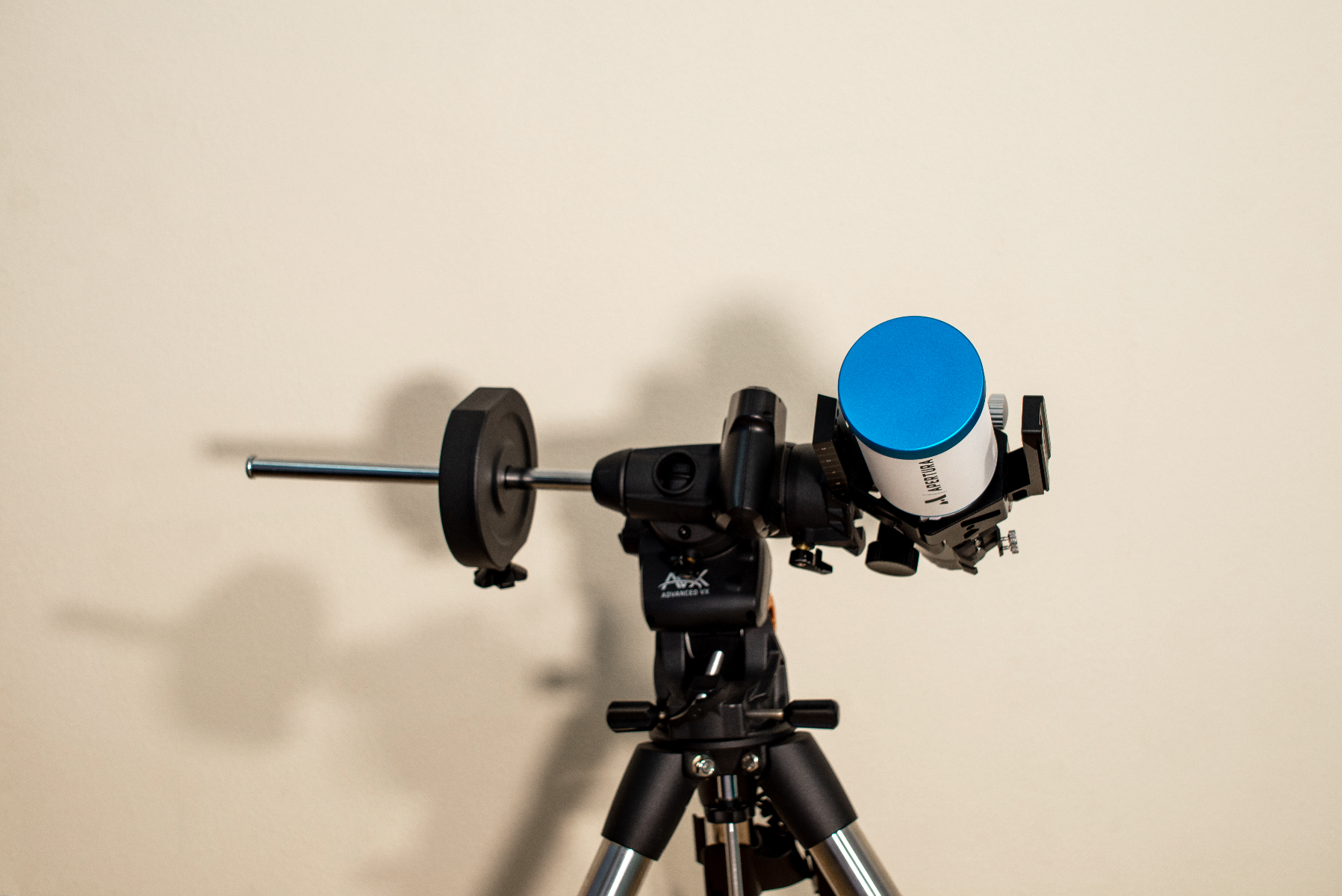
The first axis we need to worry about is right ascension. This is the axis that rotates the telescope mount from east to west if you are polar aligned. First, place the telescope in the “home” position (the counterweight shaft facing towards the ground, the telescope declination axis facing north).
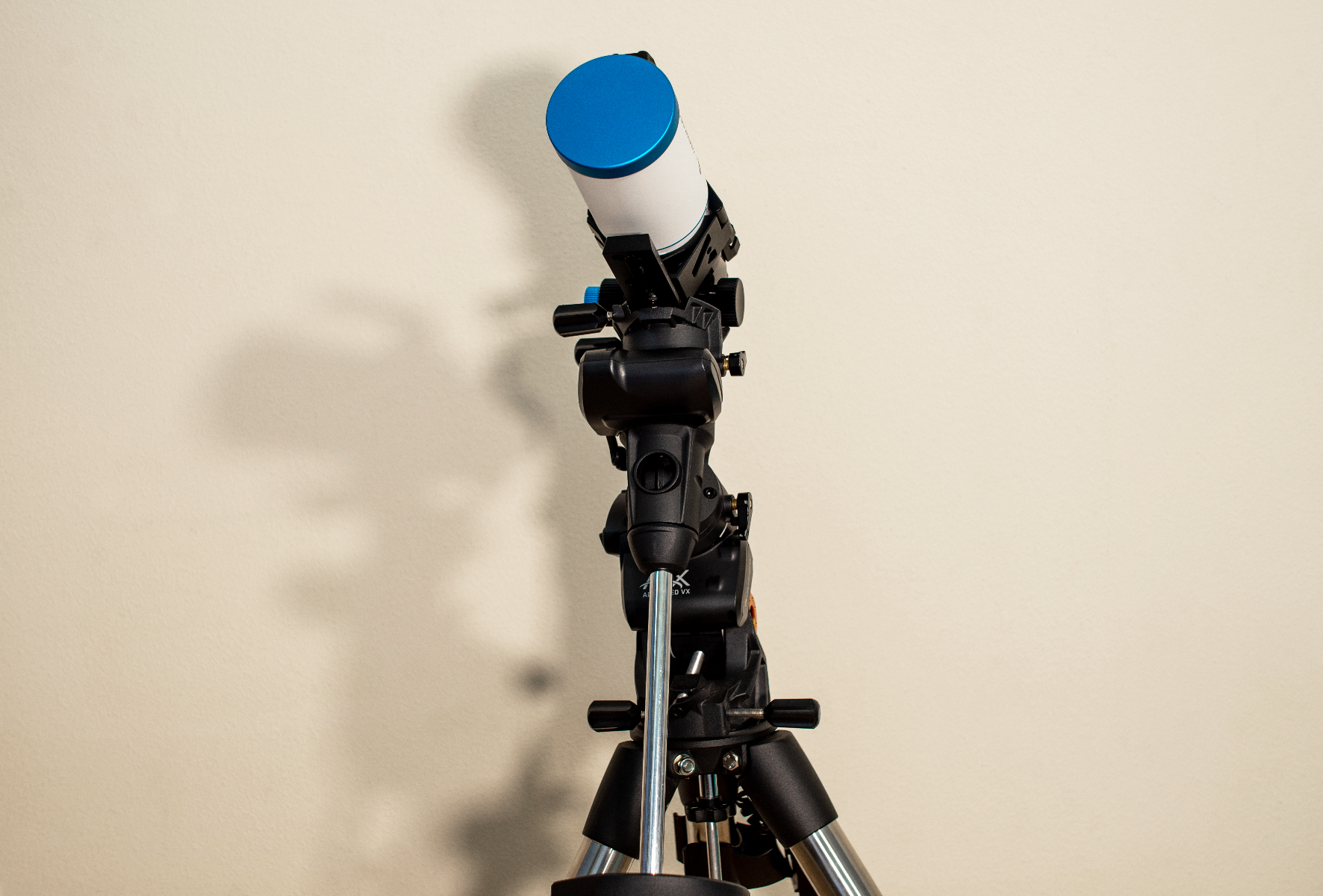
Then, unlock the right ascension clutch, slowly rotate the telescope mount 90 degrees counterclockwise until it is parallel with the ground. Make sure you have a steady grip on the telescope!
Release some pressure off the tube and see which direction the telescope tends to “swing” in. If the telescope is swinging away from you, it is east heavy. Move the counterweight up the shaft until the swinging stops. If the telescope swings towards you, it is west heavy. Move the counterweight up towards you until the swinging stops. When it does, you are balanced in right ascension.
Balancing in Declination
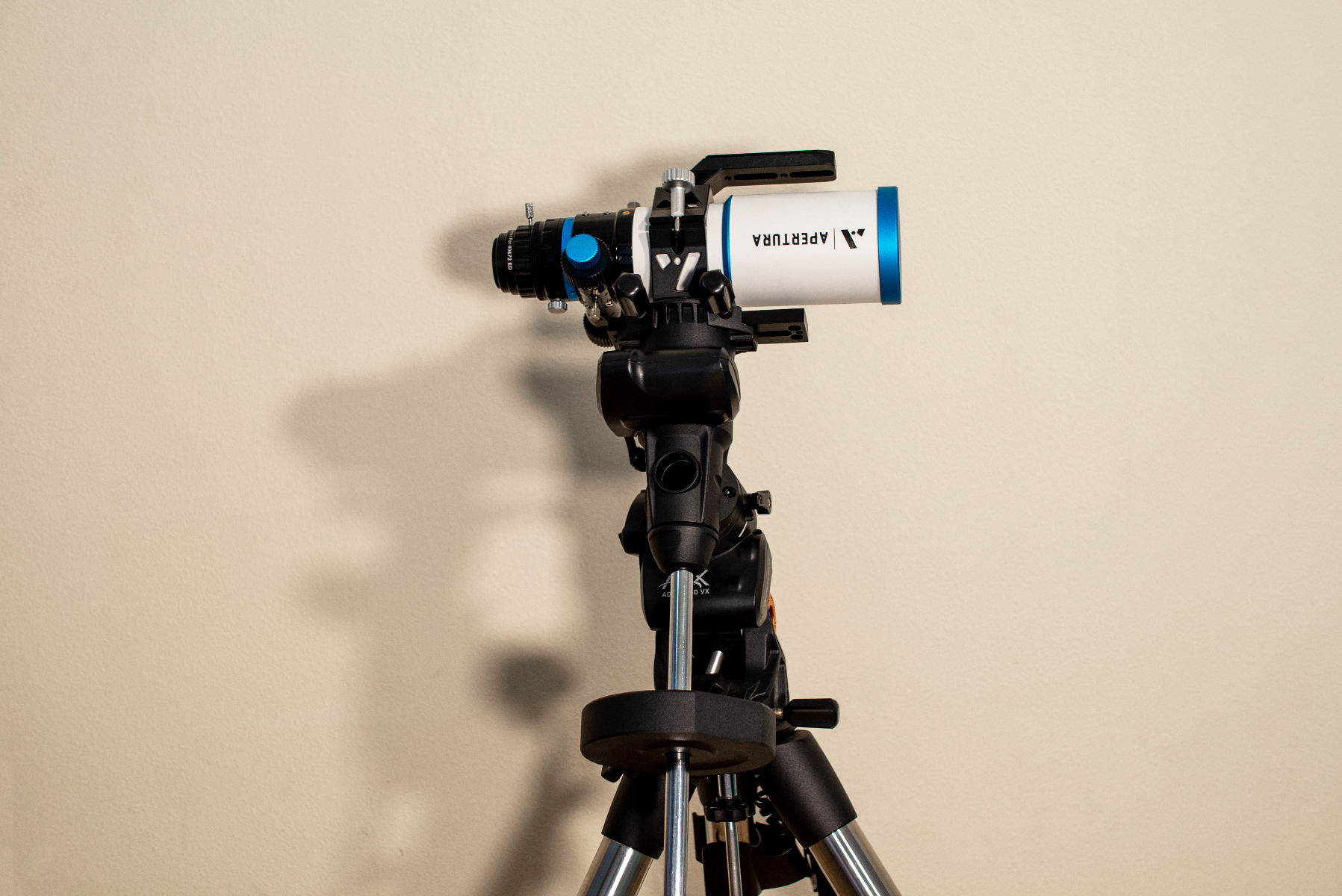
Now it’s time to balance in declination. Return the telescope to the home position, then lock the RA clutch. Now unlock the DEC clutch. Turn the telescope counterclockwise 90 degrees and then let go. Adjust the telescope up/down until the swinging stops. Once the swinging stops, you’re in balance!
Balancing On All Three Axes
Many people who are balancing their equatorial mount often stop at the above step. However, if you are using a Newtonian with the camera not in line with the telescope, you might find that the weight of the camera itself causes an imbalance. To determine this, once you’re balanced in declination, rotate the RA axis 90 degrees and the DEC axis 90 degrees, then lock up the RA clutch and unlock the DEC clutch. If the telescope still swings, you’re not balanced! Loosen the tube rings, then rotate the telescope in the tube rings to bring the weight of the camera/guide scope/etc in-line.
Balancing “East heavy”
Another tip (although not necessary) if you are doing long exposures: some amateur astronomers find it useful to balance the RA axis slightly “east heavy” to give the gears something to work against. This can somewhat improve your tracking.

Questions? Contact Us!
If you're struggling to balance your equatorial mount, our non-commissioned product advisors may be able to help you out! Simply fill out our contact form and a member of our team will be in touch as soon as possible!
Click the arrow above to see MLA, APA, and Chicago Manual of Style citations.
MLA:
Denny, Kyle. "How to Balance Your Equatorial Mount," AstronomyHub, High Point Scientific, 12 Jul. 2023, https://www.highpointscientific.com/astronomy-hub/post/how-tos/how-to-balance-your-equatorial-mount.
APA:
Denny, K. (2023, July 12). How to balance your equatorial mount. High Point Scientific. https://www.highpointscientific.com/astronomy-hub/post/how-tos/how-to-balance-your-equatorial-mount
Chicago Manual of Style:
Bibliography:
Kyle Denny. "How to Balance Your Equatorial Mount," AstronomyHub (blog), High Point Scientific, July 12, 2023. https://www.highpointscientific.com/astronomy-hub/post/how-tos/how-to-balance-your-equatorial-mount.
Footnote:
Kyle Denny, "How to Balance Your Equatorial Mount," AstronomyHub, High Point Scientific, July 12, 2023. https://www.highpointscientific.com/astronomy-hub/post/how-tos/how-to-balance-your-equatorial-mount.
This Article was Last Updated on 07/12/2023





